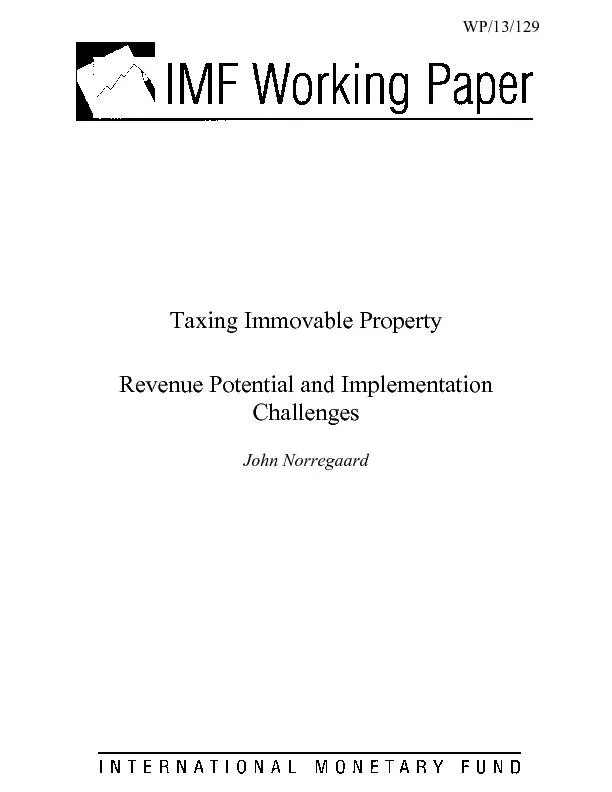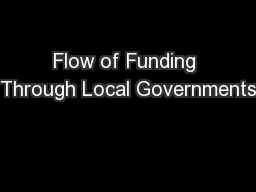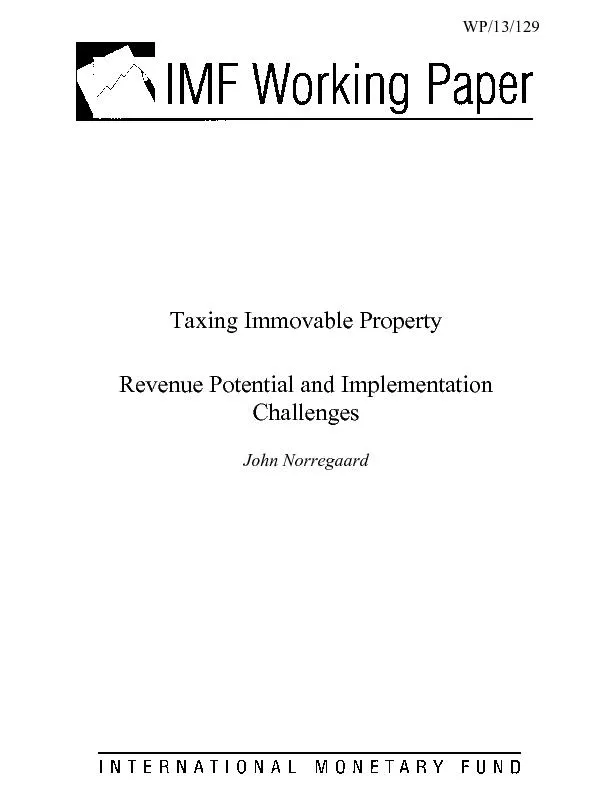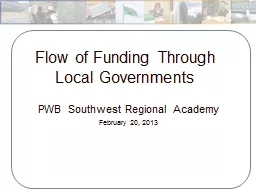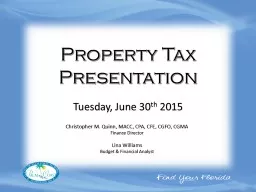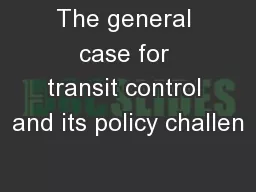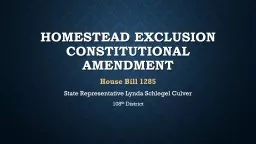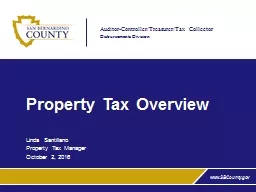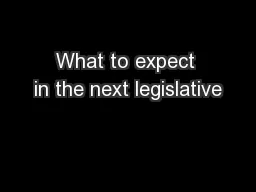PDF-Taxing Immovable Property Revenue Potential and Implementation Challen
Author : trish-goza | Published Date : 2016-06-13
WP13129
Presentation Embed Code
Download Presentation
Download Presentation The PPT/PDF document "Taxing Immovable Property Revenue Potent..." is the property of its rightful owner. Permission is granted to download and print the materials on this website for personal, non-commercial use only, and to display it on your personal computer provided you do not modify the materials and that you retain all copyright notices contained in the materials. By downloading content from our website, you accept the terms of this agreement.
Taxing Immovable Property Revenue Potential and Implementation Challen: Transcript
WP13129. Property is considered to adjoin the homestead if the only intervening real property is an easement or public right of way such as a street road or utility Noncontiguous property is property owned by the AR that does not adjoin the homestead Policy jnihar@rediffmail.com. nihar.jambusaria@ril.com . AND . FEMA REGULATIONS. TAXATION . OF . IMMOVABLE PROPERTY,CAPITAL GAINS & OTHER INCOME. index. Article 6 – Income from immovable property. Article 13 – Capital Gains. PWB Southwest Regional Academy. November 28, 2012. Municipal Budgeting and Management. August 16,2012. Highlights and Objectives. How property taxes work. How property taxes can increase when property values fall. WP/13/129 PWB Southwest Regional Academy. February 20, 2013. Municipal Budgeting and Management. August . 16,2012. Highlights and Objectives. How property taxes work. How property taxes can increase when property values fall. Christopher M. Quinn, MACC, CPA, CFE, CGFO, CGMA. Finance . Director. Lina . Williams. Budget & Financial Analyst. Tuesday, June 30. th. 2015. Budget Preparation Timeline. January. First Quarter Review . . - . between German and French legal tradition. Prof. Jerzy . Pisulinski. Jagiellonian. University . Krakow. Real rights in Polish la. w. The main act which regulates the private law relationships is the Civil Code of 23 April 1964 (with many amendments). . Wassenaar. Arrangement . Technically-Focused Practical . Workshop on Export Controls . Monday 27-Tuesday 28 June 2016, Vienna . Why control . the transit . and transhipment of arms ?. Arms are inherently ‘dangerous goods’, transited arms can have negative security implications at their final destination. Citrus County Property Appraiser. Chief Deputy. Tonya Caldwell, CFE. TRIM for 2016. What is . TRIM?. This law is designed to inform taxpayers which governmental entity is responsible for the taxes levied and the amount of tax liability owed to each taxing entity. The Notice of Proposed Property Taxes is known as the TRIM Notice. House Bill 1285. State Representative Lynda Schlegel Culver. 108. th. District. What is a Homestead?. “Under law, a homestead is defined as dwelling, including the parcel of land on which the dwelling is located and the other improvements located on the parcel…”. Linda Santillano. Property Tax Manager . October 2, 2016. Presentation Objectives:. Background of Proposition 13 and its effect on property taxes.. Property Tax functions by County Departments. Overview of Property Tax Bills. Who We . A. re. A non-profit, non-partisan organization. 305 members (303 municipalities & 2 parishes). 38-member Executive Board. (Mayors, Council members, Chiefs of Police/Fire, Clerks). 8 affiliate organizations . session . Presentation by. Debbie Cartwright, Counsel. Texas Taxpayers and Research Association. Property Tax . Chapter 312. Property Redevelopment and Tax Abatement Act. QUESTION:. In what statutory code can this law be found?. FudMy-Skt Acalanatha Fudo is a Buddhist deity who serves practitioners by defeating the obstacles and devils which hinder Buddhist practice He is regarded as the head of five great deities the other f
Download Document
Here is the link to download the presentation.
"Taxing Immovable Property Revenue Potential and Implementation Challen"The content belongs to its owner. You may download and print it for personal use, without modification, and keep all copyright notices. By downloading, you agree to these terms.
Related Documents

